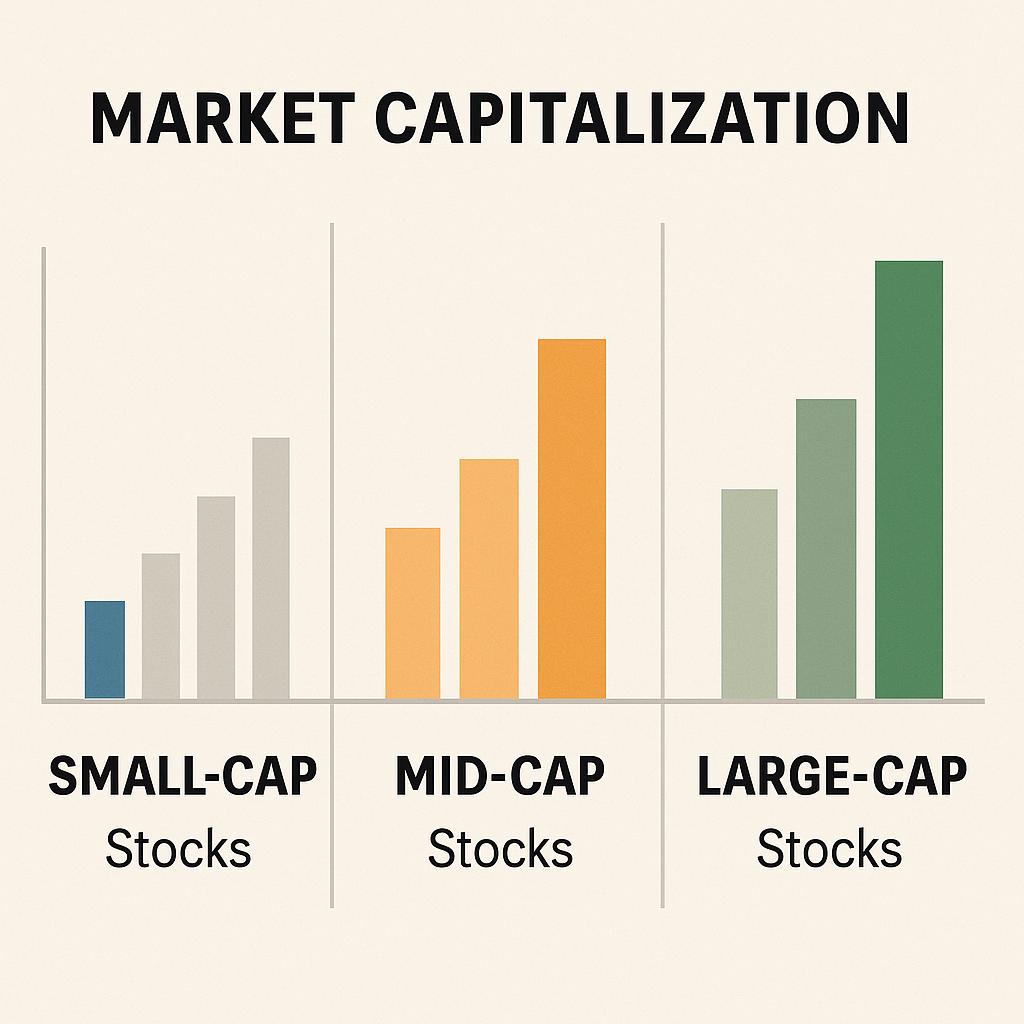
Market Capitalization: Small-Cap, Mid-Cap, and Large-Cap Stocks
Understanding Market Capitalization
Market capitalization, commonly known as “market cap,” serves as a fundamental indicator in the realm of finance, reflecting the overall market value of a company’s circulating shares of stock. This valuation is derived by multiplying the current price per share by the total number of shares in circulation. Understanding market capitalization is vital as it helps to classify companies into different segments, each having distinctive characteristics and implications particularly pertinent to investors.
Small-Cap Stocks
Small-cap stocks are associated with companies whose market capitalization is generally between $300 million and $2 billion. These entities are frequently in the early growth stages, showing promising prospects for significant gains. However, these stocks are deemed risky investments due to being highly influenced by market fluctuations and economic downturns. An interesting aspect of small-cap stocks is that they are often not as extensively tracked by analysts, which could create lucrative opportunities for investors who perform thorough and independent analyses.
Characteristics of Small-Cap Stocks
These stocks often display a noteworthy growth potential when measured against larger-cap stocks. Typically situated within innovative sectors, small-cap companies may be involved in developing groundbreaking products or services that have the potential to disrupt established markets. Despite these promising opportunities, small-cap stocks carry higher risks linked to less mature operations. Additionally, these firms often have limited capital access, contributing to their heightened vulnerability during economic downturns.
Mid-Cap Stocks
Mid-cap stocks are attributed to companies whose market capitalization spans from $2 billion to $10 billion. These stocks offer a balanced investment approach, providing growth potential while bearing a comparatively lower risk than their small-cap counterparts. Mid-cap companies have usually moved beyond the initial phases of their growth journey, having more refined and established business models.
Characteristics of Mid-Cap Stocks
Mid-cap stocks provide a blend of growth prospects and stability. Such companies might have secured a degree of market visibility and credibility while still having opportunities to grow. Investors are often drawn to mid-cap stocks for their capacity to excel in favorable economic situations while offering a measure of resilience during economic downturns, thanks to their more matured business operations.
Large-Cap Stocks
Large-cap stocks refer to companies holding a market capitalization of $10 billion or more. Typically, these stocks belong to well-established, high-value companies with a pronounced presence in the market. Familiar examples encompass multinational corporations and industry frontrunners with a global outreach. Investors generally perceive large-cap stocks as stable investments with lesser volatility compared to smaller-cap stocks.
Characteristics of Large-Cap Stocks
Large-cap firms often exhibit robust and consistent financial performance, bolstered by established customer bases. Such companies commonly distribute dividends, making them appealing to investors concentrating on income. Despite their potentially slower growth rate relative to smaller companies, they offer a level of stability and predictability, especially significant during unpredictable market scenarios.
Understanding Investment Implications
Investors are encouraged to diversify their portfolios encompassing different market cap categories to balance associated risks and potential returns. Small-cap stocks possess substantial growth prospects yet entail enhanced volatility. Mid-cap stocks present an equilibrium between growth and risk, offering some stability. On the other hand, large-cap stocks generally ensure stability and come with income possibilities through dividend distributions.
Comprehending the distinctions amongst small-cap, mid-cap, and large-cap stocks is essential in crafting a diverse and robust investment portfolio. Every category fills a specific niche in an investor’s approach, with acknowledgment of market conditions along with individual company forecasts assisting in informed investment decisions.
In conclusion, market capitalization serves as a pivotal framework, structuring the financial market and facilitating investors in their decision-making processes. By realizing the unique features and potential investments associated with each category, investors can strategically align their portfolios with their financial goals and risk tolerance. For additional insights on market capitalization, exploring investment-centered websites or consulting financial advisory services can provide further tailored guidance.
This article was last updated on: August 26, 2025